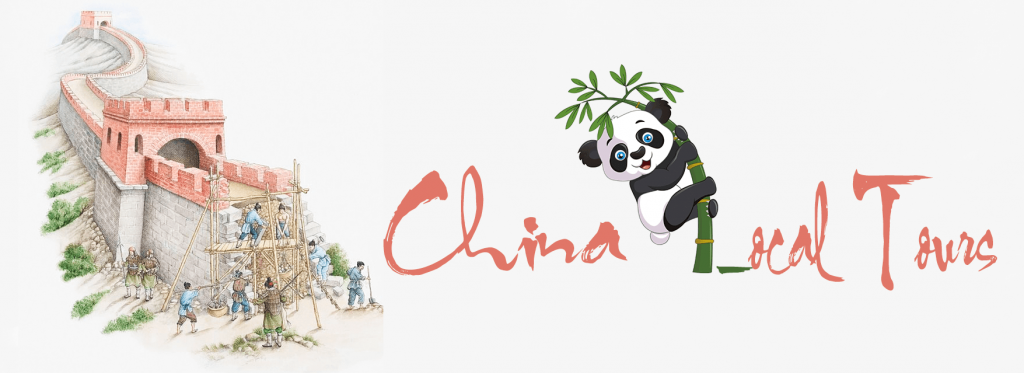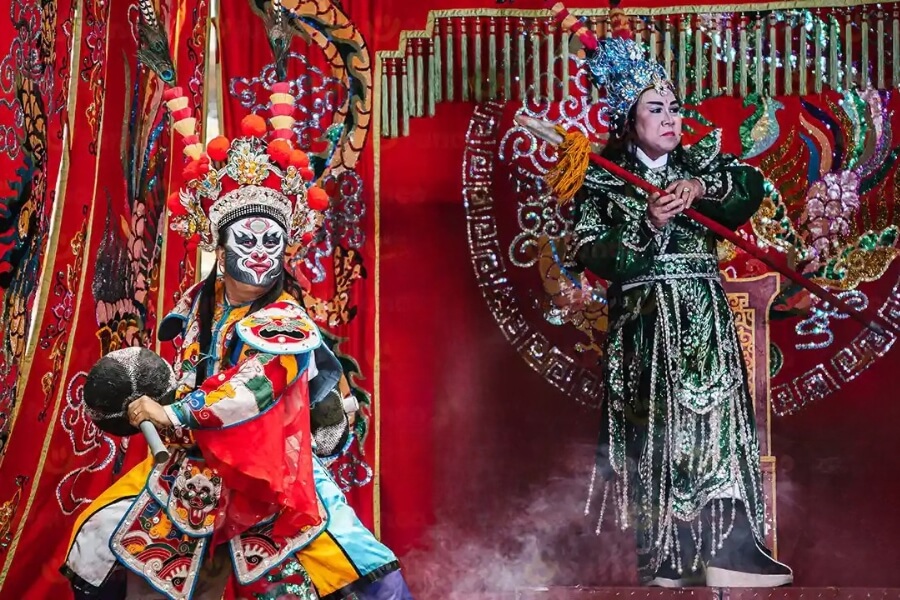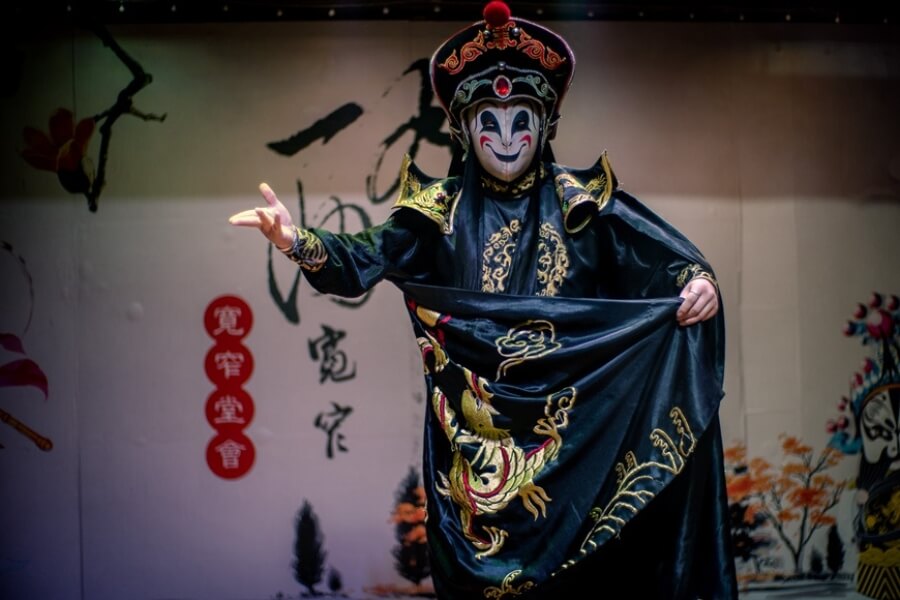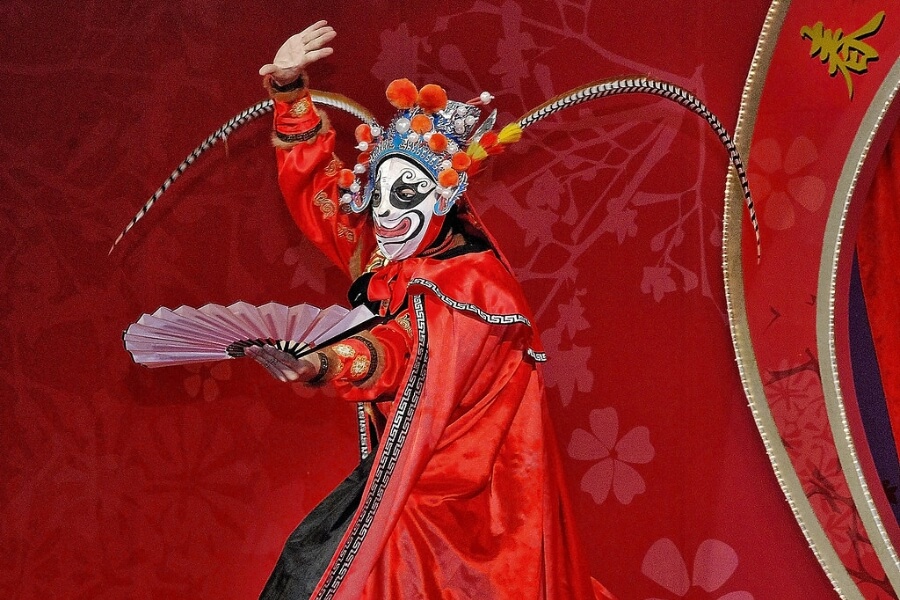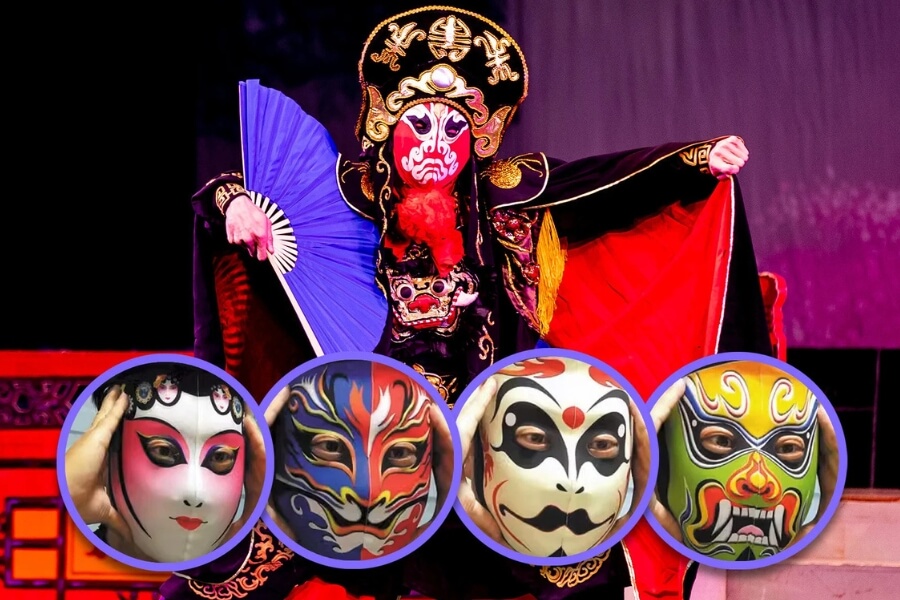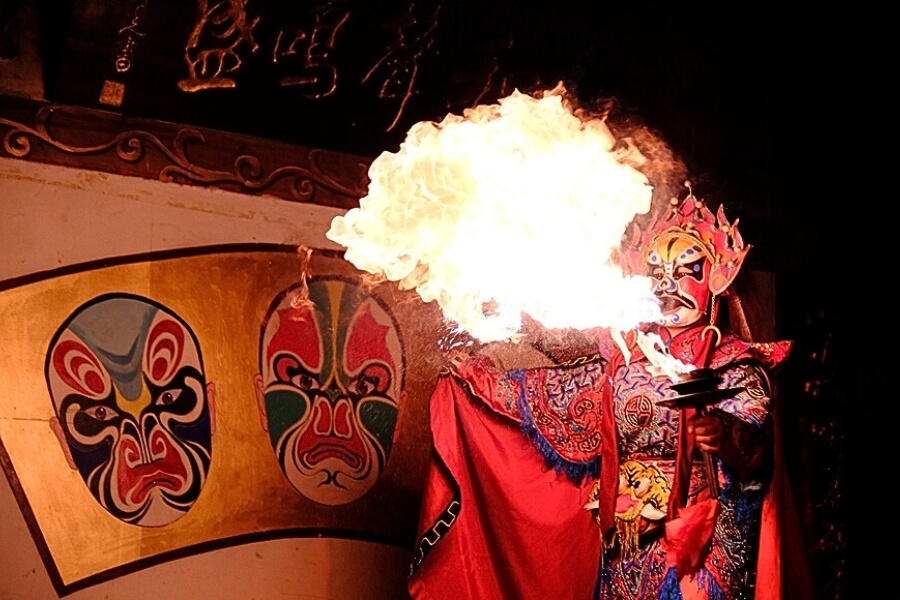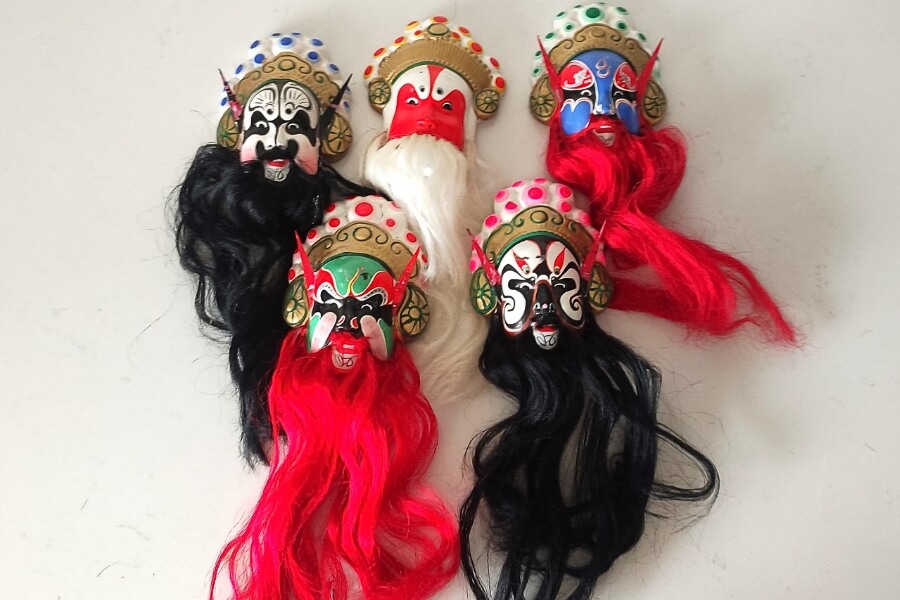In the vibrant tapestry of Chinese performing arts, few spectacles rival the mesmerizing allure of the Bian Lian mask dance. This ancient technique, known for its lightning-fast transformations, turns the stage into a whirlwind of color and emotion, captivating audiences with every flick of a wrist. At its core lies the bian lian mask changing - a skill so intricate and secretive that it once guarded family lineages like a sacred heirloom. For travelers drawn to the heart of traditional Chinese theater, partnering with a China Local Tour Operator opens a gateway to Sichuan's cultural soul, where history, artistry, and mystery intertwine. Whether you're envisioning the dramatic flair of a Peking Opera stage or the intimate glow of a Sichuan mask performance, this art form promises an unforgettable encounter with China's theatrical heritage.
The Historical Roots of Bian Lian Mask in Sichuan Opera
The story of the Bian Lian mask dance begins in the misty mountains of Sichuan Province, where it emerged as a cornerstone of Sichuan opera around the late 17th century. This regional variant of traditional Chinese theater, blending folk songs, acrobatics, and elaborate costumes, provided fertile ground for innovative expressions like bian lian mask changing. Historians trace its formalization to the Qing Dynasty, when traveling troupes refined the technique to heighten dramatic tension in tales of loyalty, betrayal, and heroism - narratives that mirrored the turbulent lives of ordinary people.
What elevates the Bian Lian mask to legendary status is its aura of secrecy. For centuries, the methods were transmitted solely within families, often from father to son, ensuring that outsiders remained in the dark about how performers achieved such seamless shifts. This exclusivity wasn't mere tradition; it was a cultural safeguard, preserving the purity of a craft that demanded years of rigorous training. As noted in historical accounts from the Smithsonian's National Museum of Asian Art, the art form's guarded nature stemmed from its role in evoking supernatural elements, much like the shape-shifting spirits of Chinese folklore. By the mid-20th century, Bian Lian had woven itself into the fabric of Sichuan's festivals and courtly entertainments, but it wasn't until the 1980s that glimpses escaped China's borders.
A pivotal moment came in 1986 during a Sichuan opera troupe's tour to Japan, where subtle demonstrations inadvertently revealed hints of the technique, sparking global fascination and concerns over cultural appropriation. This "leak" marked the beginning of Bian Lian's international journey, evolving from a regional secret to a symbol of Chinese ingenuity. Today, as UNESCO recognizes elements of Sichuan opera in its intangible cultural heritage lists, the Bian Lian mask stands as a testament to resilience - adapting to modern stages while honoring its Qing-era roots. For those exploring Chengdu's teahouses or Chongqing's riverside venues, witnessing this evolution firsthand reveals how a 300-year-old practice continues to pulse with vitality, bridging eras in a single, breathtaking reveal.
Techniques in Bian Lian Mask Changing
Delving into the mechanics of bian lian mask changing reveals a world of precision and poetry, where every gesture is a brushstroke on the canvas of performance. At its essence, this art relies on four primary methods, each honed through decades of practice to create the illusion of instantaneous metamorphosis. Performers, clad in flowing robes that billow like storm clouds, execute these shifts amid rhythmic gongs and strings, transforming their faces from serene blue to furious red in the blink of an eye - or faster.
One foundational technique involves "pulling-down masks," where lightweight layers are concealed within elaborate headdresses or sleeves, ready to cascade over the face with a subtle tug. Imagine the tension building as a warrior character, embodying unyielding valor, suddenly unveils a mask of sorrow - the red Sichuan mask giving way to a somber black one, symbolizing the weight of defeat. Complementing this is "blowing dust," a sleight-of-hand where performers exhale a fine powder to momentarily veil their features, allowing for a hidden layer to emerge unscathed. This method, evoking the haze of ancient battlefields, adds an ethereal quality that blurs the line between theater and magic.
Then there's the artistry of "beard manipulation," a subtler evolution of the Bian Lian mask dance that manipulates facial hair to convey aging or emotional turmoil. Strands shift from jet black to silver in fluid motions, mirroring a character's descent into wisdom or despair - a detail that elevates the performance beyond mere visuals into profound storytelling. Finally, "face-dragging" employs concealed greasepaint in sideburns or collars, smeared across the skin in a whirlwind spin to alter hues on the fly. These techniques, as detailed in ethnographic studies from the People's Daily, demand not just dexterity but an intuitive grasp of timing, often requiring apprentices to endure grueling regimens from childhood.
What strikes observers most is the emotional undercurrent; each bian lian mask changing isn't random but choreographed to the narrative's pulse. In a classic Sichuan opera piece like The Legend of the White Snake, the rapid succession of masks amplifies the serpent spirit's volatile moods, leaving viewers breathless. This mastery, once a state secret in China during the early 2000s, underscores the performers' dedication - many train in isolation for 10 to 20 years, their hands calloused from endless rehearsals. For enthusiasts of Chinese performing arts, grasping these layers transforms a simple show into a symphony of human ingenuity, where the Bian Lian mask becomes a mirror to the soul's deepest shifts.
The Cultural Depth of Bian Lian Masks in Traditional Chinese Theater
Beyond the spectacle, the Sichuan mask in Bian Lian mask changing carries layers of symbolism that resonate through China's philosophical traditions. Each color etched into these ornate faces draws from Confucian ideals and Daoist mysticism, serving as visual shorthand for moral archetypes. A crimson Bian Lian mask, for instance, heralds bravery and loyalty, evoking legendary figures like Guan Yu from the Romance of the Three Kingdoms. In contrast, the stark black variant signifies unyielding integrity, a nod to scholars who withstood imperial corruption. Green might unleash waves of envy or fury, while blue whispers of melancholy, painting the Peking Opera stage with emotional nuance that words alone could scarcely capture.
This symbolic richness ties directly to the broader canvas of traditional Chinese theater, where Sichuan opera's raw energy contrasts the more stylized Peking opera yet shares its commitment to moral allegory. As explored in cultural analyses from China Current, the masks function as "emotional amplifiers," allowing audiences to internalize virtues amid the chaos of plot twists. In rural Sichuan villages, where performances once warded off evil spirits during harvest rites, these transformations held ritual power - believed to harness qi, the vital energy, for communal harmony. Even today, during festivals like the Dragon Boat celebrations in Chongqing, Bian Lian mask dances invoke ancestral blessings, blending entertainment with spiritual reverence.
The cultural significance extends to gender dynamics and social evolution. Traditionally male-dominated, the art has seen trailblazers like Candy Chong, a Malaysian-Chinese performer who shattered norms by mastering the craft under her father's tutelage in the 1990s. Her story, chronicled in Malaysian media, highlights how bian lian mask changing adapts to global diasporas, fostering cross-cultural dialogues. Similarly, Du Li Min's workshops in Kuala Lumpur introduce newcomers to the Sichuan mask's lore, proving the technique's enduring relevance. For travelers, this depth invites reflection: in a world of fleeting digital illusions, the tangible poetry of a Bian Lian mask reminds us of storytelling's timeless power to heal and unite.
From Chengdu Teahouses to Global Stages: Experiencing the Bian Lian Mask Dance
No discussion of bian lian mask changing would be complete without guidance on where to witness its magic firsthand. In Sichuan's capital, Chengdu, the Shufeng Yayun teahouse offers nightly immersions into this world, where under lantern light, performers weave masks into tales of ancient intrigue. Here, the intimacy amplifies the awe - seats mere feet from the action allow one to catch the subtle tremor of a hand before the reveal, a detail that eludes larger venues. Venture to Chongqing's riverside theaters, and you'll find bian lian mask changing fused with local dialects, adding a layer of regional flavor to the universal drama.
For those seeking a Peking Opera stage infusion, Beijing's Liyuan Theatre occasionally features hybrid shows, blending Sichuan's visceral changes with northern elegance. These experiences, as shared in travelogues from Trippest, often include backstage tours where guides unveil mask-making ateliers - artisans layering silk and paint by hand, each piece a labor of love. Modern twists abound too: in 2008, illusionist Juliana Chen dazzled American audiences on The World's Greatest Magic with a black-light rendition, adapting the Bian Lian mask for neon glows without losing its soul. Even pop icon Andy Lau's 2003 brush with master Peng Denghuai - rumored to involve a hefty sum for lessons - sparks tales of celebrity intrigue, underscoring the art's magnetic pull.
What unites these locales is the shared gasp of wonder, a collective hush as colors cascade like autumn leaves. Travelers often recount the post-show glow, masks lingering in memory long after the final bow. In an era of scripted realities, the unscripted thrill of a Sichuan mask unveiling reaffirms theater's role in sparking joy and curiosity.
Bringing Home Bian Lian Masks as Souvenirs for Travelers
For visitors enchanted by the Bian Lian mask dance, bringing a piece of this cultural treasure home is a tangible way to preserve the memory of China's theatrical brilliance. In Chengdu's bustling Jinli Ancient Street or Chongqing's Ciqikou Old Town, local markets brim with meticulously crafted Sichuan masks, perfect as keepsakes or gifts. These replicas, while not used in performances, capture the vivid colors and symbolic designs of the originals - crimson for courage, black for integrity, or green for passion - allowing travelers to hold a fragment of traditional Chinese theater in their hands.
Artisan stalls, such as those near the Shufeng Yayun teahouse, offer hand-painted Bian Lian masks made from lightweight materials like bamboo, paper, or silk, often adorned with intricate patterns inspired by Qing Dynasty aesthetics. Prices typically range from 50 to 200 CNY, depending on craftsmanship, with higher-end pieces featuring lacquered finishes or embroidered details. For authenticity, seek out vendors certified by local cultural boards, as their work supports preservation efforts and ensures fair trade. Reputable shops like Chengdu's Shu Brocade and Embroidery Museum also stock curated selections, pairing masks with booklets explaining their symbolic meanings - a thoughtful touch for gifting.
When selecting a Bian Lian mask, consider its cultural weight: these are not mere trinkets but emblems of Sichuan's storytelling heritage. Displaying one at home sparks conversations about the mesmerizing bian lian mask changing witnessed on stage, while gifting one shares the magic of Chinese performing arts with loved ones. To ensure safe travels, opt for compact designs wrapped in protective cloth, and check customs regulations for wood or silk items. By choosing these souvenirs, travelers not only carry home a piece of Sichuan's soul but also support artisans keeping this ancient craft alive.
